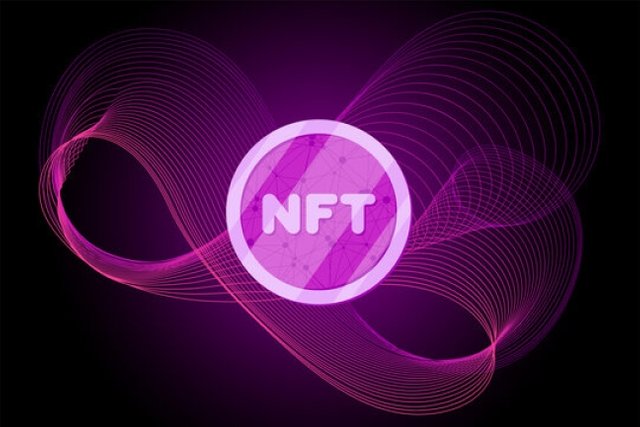
The world of non-fungible tokens has seen explosive growth in recent years, capturing the imagination of creators, collectors, investors, and technologists alike. NFTs represent unique digital assets stored on blockchain technology, ranging from digital art and collectibles to virtual real estate and in-game items. As the popularity of NFTs continues to soar, the landscape of NFT marketplaces is evolving rapidly to meet the growing demand. In this comprehensive guide, we'll explore the latest trends and opportunities in NFT marketplace development for 2024, empowering entrepreneurs and innovators to capitalize on this dynamic space.
Metaverse Integration:
One of the most exciting trends shaping the future of NFT marketplaces is the integration with the metaverse. The metaverse refers to a collective virtual space inhabited by digital avatars, assets, and experiences, often interconnected across various virtual worlds and platforms. NFT marketplaces are poised to play a pivotal role in the metaverse ecosystem by enabling users to buy, sell, and showcase NFTs within virtual environments.
In 2024, we can expect to see NFT marketplaces forging partnerships with virtual worlds, gaming platforms, and social VR platforms to facilitate seamless integration of NFTs. This integration will enable users to personalize their virtual identities with unique NFT-based avatars, clothing, accessories, and virtual properties. Moreover, NFT marketplaces may collaborate with metaverse projects to host virtual events, exhibitions, and experiences where users can interact with NFTs in immersive 3D environments.
By embracing metaverse integration, NFT marketplaces can unlock new avenues for creativity, social interaction, and economic activity, fostering a vibrant ecosystem where digital assets transcend traditional boundaries and take on a life of their own.
Interoperability and Cross-Platform Compatibility:
Interoperability and cross-platform compatibility are becoming increasingly important considerations in the NFT ecosystem. As NFTs proliferate across multiple blockchain networks and marketplaces, there is a growing need for standards and protocols that enable seamless transfer and trading of NFTs across different platforms.
In 2024, we can expect to see NFT marketplaces adopting interoperability standards such as the Ethereum-compatible ERC-721 and ERC-1155 standards, as well as emerging cross-chain protocols like Polkadot's Substrate and Cosmos' Inter-Blockchain Communication (IBC) protocol. These standards will enable NFTs to be transferred and traded across diverse blockchain networks, providing users with greater flexibility and liquidity for their digital assets.
Moreover, NFT marketplaces may implement cross-platform compatibility features that allow users to access and manage their NFTs from multiple marketplaces through a unified interface. This seamless integration will enhance user experience and foster interoperability within the broader NFT ecosystem.
By embracing interoperability and cross-platform compatibility, NFT marketplaces can unlock new opportunities for collaboration, liquidity, and innovation, driving the continued growth and adoption of NFTs across the digital landscape.
Gamification and Rewards:
Gamification and rewards mechanisms are emerging as powerful tools for driving user engagement and retention in NFT marketplaces. By incorporating game-like elements such as achievements, quests, leaderboards, and rewards into the marketplace experience, NFT platforms can incentivize users to interact more actively with the platform and explore new opportunities for earning and collecting NFTs.
In 2024, we can expect to see NFT marketplaces experimenting with gamification features to enhance user engagement and loyalty. For example, marketplaces may introduce gamified challenges where users can earn exclusive NFTs by completing tasks, participating in community events, or achieving milestones within the platform. Additionally, marketplaces may implement reward mechanisms such as loyalty points, staking rewards, and referral bonuses to incentivize user participation and contribution to the ecosystem.
Furthermore, NFT marketplaces may collaborate with game developers to integrate NFTs into popular gaming experiences, enabling players to earn, trade, and use NFTs within their favorite games. This convergence of gaming and NFTs opens up new opportunities for cross-promotion, monetization, and user acquisition, driving adoption of NFTs among mainstream audiences.
By embracing gamification and rewards, NFT marketplaces can create immersive and rewarding experiences that captivate users and foster a sense of community and belonging within the ecosystem.
Environmental Sustainability:
Environmental sustainability is emerging as a pressing concern in the blockchain and NFT space, as the energy consumption associated with blockchain transactions comes under scrutiny. In 2024, we can expect to see NFT marketplaces prioritizing environmental sustainability initiatives to mitigate their carbon footprint and promote eco-friendly practices.
One approach to enhancing environmental sustainability in NFT marketplaces is the adoption of energy-efficient consensus mechanisms and blockchain networks. For example, marketplaces may migrate to proof-of-stake (PoS) or delegated proof-of-stake (DPoS) consensus algorithms that consume significantly less energy compared to proof-of-work (PoW) systems. By reducing energy consumption and carbon emissions, NFT marketplaces can minimize their environmental impact and contribute to a more sustainable future.
Additionally, NFT marketplaces may explore carbon offset programs and sustainability partnerships to offset the carbon emissions associated with blockchain transactions. By investing in renewable energy projects, reforestation initiatives, and carbon capture technologies, marketplaces can mitigate their environmental footprint and promote positive environmental stewardship within the industry.
Moreover, NFT marketplaces may educate users about the environmental impact of blockchain technology and encourage eco-friendly practices such as minimizing transaction frequency, optimizing gas usage, and supporting green blockchain initiatives. By raising awareness and promoting sustainability, NFT marketplaces can foster a culture of environmental responsibility among users and stakeholders.
Conclusion:
As we look ahead to 2024, the opportunities and possibilities in NFT marketplace development are boundless. By embracing trends such as metaverse integration, interoperability, gamification, and environmental sustainability, NFT marketplaces can unlock new avenues for creativity, innovation, and growth. Whether you're an entrepreneur, artist, collector, or investor, now is the time to seize the opportunities presented by the dynamic world of NFTs and shape the future of digital ownership and commerce.